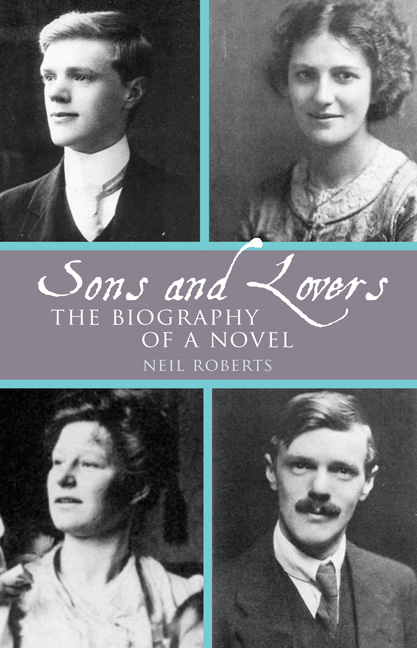Book contents
- Frontmatter
- Dedication
- Contents
- List of Abbreviations
- List of Figures
- Introduction
- 1 Bert and Jessie, 1901–1909
- 2 ‘The Saga of Siegmund’ and the Test on Lawrence, 1909–1910
- 3 ‘Paul Morel I’ and the Death of Lydia Lawrence, August–December 1910
- 4 Betrothal and ‘Paul Morel II’, January–October 1911
- 5 Re-enter Jessie, 1911–1912
- 6 ‘The death-blow to our friendship’, ‘Paul Morel III’, February–June 1912
- 7 From ‘Paul Morel’ to Sons and Lovers, July–November 1912
- 8 Epilogue, 1912–1913
- Bibliography
- Endnotes
- Index
3 - ‘Paul Morel I’ and the Death of Lydia Lawrence, August–December 1910
- Frontmatter
- Dedication
- Contents
- List of Abbreviations
- List of Figures
- Introduction
- 1 Bert and Jessie, 1901–1909
- 2 ‘The Saga of Siegmund’ and the Test on Lawrence, 1909–1910
- 3 ‘Paul Morel I’ and the Death of Lydia Lawrence, August–December 1910
- 4 Betrothal and ‘Paul Morel II’, January–October 1911
- 5 Re-enter Jessie, 1911–1912
- 6 ‘The death-blow to our friendship’, ‘Paul Morel III’, February–June 1912
- 7 From ‘Paul Morel’ to Sons and Lovers, July–November 1912
- 8 Epilogue, 1912–1913
- Bibliography
- Endnotes
- Index
Summary
Three days after breaking with Jessie, still staying with his family in Eastwood, Lawrence wrote again to his London literary acquaintance Grace Crawford. In this letter he dropped the affected style he had adopted in previous correspondence with her, and gave a sketch of his family home: the house, the furniture, the fire that always burned in a miner's kitchen. He mentioned his father, out ‘drinking a little beer with a little money he begged of me’ and described his mother, ‘who is short and greyhaired, and shuts her mouth very tight’, reading a translation of L’Éducation sentimentale with ‘a severe look of disapproval’, and his younger sister Ada. His married brother and sister, George and Emily, ‘do not count’ (L1 174). This seems an odd dismissal—he had never been close to George but Emily had been his childhood playmate. He is focusing on the domestic scene, on the ‘small family’ as he was to call it in the second draft of Paul Morel, which became smaller as his siblings married out (PM112). Could Lawrence have been half thinking about his projected novel as he wrote this letter?
There is another text, a brief aborted novel, that has a role in the complicated genesis of Sons and Lovers. Later in July 1910 Lawrence wrote to Louie Burrows with various news about his literary activities, including something called ‘Matilda’: ‘when I looked at her I found her rather foolish: I'll write her again when Ie a bit of time’ (L1 172). This almost certainly refers to a fortyeight- page manuscript that has been published in the Cambridge University Press Paul Morel. It is clearly based on Lydia Lawrence's family history, as more briefly summarised in the first chapter of Sons and Lovers. We meet the overbearing and embittered father, the gentle mother who suffers at his hands, and Matilda herself who like Mrs Morel inherits her mother's physique but her father's ‘imperious stare’ (PM146). The fragment opens with a vivid and promising portrait of Matilda as a child, refusing to respond to the advances of the Methodist minister. It anticipates the brilliant portrayals of childish hauteur in The Rainbow and Women in Love.
- Type
- Chapter
- Information
- Sons and LoversThe Biography of a Novel</I>, pp. 57 - 68Publisher: Liverpool University PressPrint publication year: 2016



